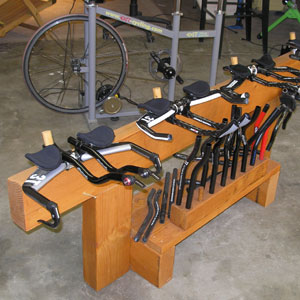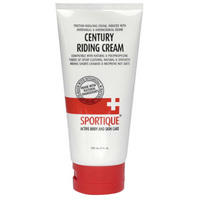
What bugs the holy spit out of me are products in retail stores hung up on pegboards, in poly bags, when such products cannot be successfully used until they pass a tactile test. What if running shoes were sold that way? "There it is!" says the purveyor. "There's your Avi-Stoltz's, size 12. Up there on the pegboard. See it in the poly bag? Want to buy them? Or not?"
The problem is this: You don't know if you're going to like those Avi Stoltz shoes until you run in them. Or at least try them on. But, you don't get to do that in the world of cycling, not with aerobars at least, because the first time you try them is after they've been mounted on your bike, cables routed, stem in place, brake levers attached, and a bill affixed to your bike, by a little zip tie, for parts and labor.
I don't mind that aerobar companies seal their products up in bags with header cards, or put them in pretty aftermarket boxes like helmet makers put their helmets in boxes. But stores take these helmets out of these boxes, one in each size, and display them in ways that allow you to try them on prior to purchase, do they not? So? Where's the aerobar analog?
Behold the analog. Or at least one iteration of it. In our bike fit workshops one of the steps is to choose a preferred front end to mount to the fit bike. This, prior to starting the fitting process. It occurred to me that I ought to make a way for my fit subjects to determine in advance what front end they wanted.
Part of that calculus is asking the subject what the purpose of this fit is. Pursuant to a new bike you have your eye on? Then, by all means, let's put that bike's OE front end on the fit bike.
Wait just one cotton-pickin' minute I might, and certainly would, say, were I the subject. Aerobars are a contact point and—maybe I've forgotten to tell you—I've declared 2010 the Year of the Contact Point. By December 31 upcoming let us as an industry and an avocation understand and stipulate to this: Contact points are more important than frame materials, aerodynamics, weight, cosmetics, style, Ironman licenses, headbadges, or how many races have been won aboard this equipment or that.
So, even if it's a new bike I was interested in, it would only be freak luck if the aerobar that bike company chose for spec is the aerobar I wish to use. I mean, what if tri bikes were sold with helmets? Are you going to just, like a sheep, be locked into the use of that helmet? And how is an aerobar any less tactile and personal than a helmet?
Of course, some bike makers would note that the choice and design of aerobar spec'd on their bikes is strategic and premeditated, not only because of the price points and relationships with certain bar manufacturers, but because the bars are a good thematic fit with the rest of that bike maker's bike. Noted. And, for this reason I think it's fair to at least consider the OE bar before moving to something else.
In any case, whether it's the OE bar or an aftermarket option, the customer ought to have a chance to try the darned thing before he commits. So, I thought it incumbent on me to provide a way to execute a trial-before-purchase display.

I rooted around the Compound for relatively twist-free lumber and commenced. The idea was this: make room for at least 4 aerobar set ups, high enough off the ground so that the average person could bend over at the waist, place his or her elbows in the cups and, positioned assumed, determine whether this set of contact points represented comfort. Or not. Then, move 18 inches to the left or right and try again on a new set up.
The thing took two hours to build.
I've since adorned this erection with fixtures for ornaments, chiefly extensions that I'll sub into the aerobar clamp-and-armest systems I most admire.
The point is not that there's any magic to this particular display, rather that some sort of method for contact point testing needs to be in every bike store serious about selling to triathletes. In the same way a potato chip becomes more than a potato chip when it comes out of the oven in the shape of a revered patriarch (or matriarch), a component becomes more than a component when your body's weight rests directly upon it.
Watch and you'll note that the better retail stores commence honoring that fact as regards the very important contact point called the aerobar.


